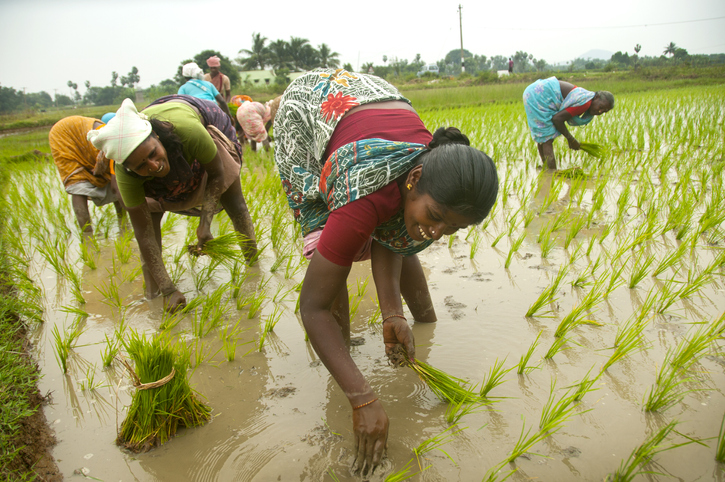Access to the internet is rising fast across the globe. But the majority of people in developing countries are still excluded from digital technologies, and very few have access to affordable high-speed internet. This column explores the implications for labor market outcomes and potential policy responses. On the demand side, educational programs to improve cognitive skills and digital literacy are key; while on the supply side, 5G technology provides an opportunity to achieve greater accessibility for all, including the most vulnerable and those in remote areas.
Big new challenges in the labor market arrived abruptly in 2020 when the Covid-19 pandemic affected economic activity on a large scale across the globe. Workers needed to adapt quickly to a new environment using digital technologies, which may become a permanent trend.
There is an expectation that these changes will promote productivity gains and eventually greater economic efficiency. Preliminary findings suggest that both outcomes may materialize: a higher percentage of work done through digital technologies; and productivity improvement.
But these changes might also widen social inequalities. As observed, for example, between children with access to remote learning and their less fortunate peers who did not have a device connected to the internet to follow online lessons.
In the labor market, there are already inequalities between internet users and non-users, and these may increase. Research indicates that better educated, well connected, and more capable workers have received most of the benefits of greater use of digital technologies. Understanding and measuring the wage gap between those using and not using the internet is at the top of the agenda in the labor market.
For example, one study shows that Brazilians with internet access experienced 20% higher wages than those not yet connected to the international network. Expansion of the internet has gradually reduced the wage gap between workers connected to the internet and those still outside the global network, yet the difference persists. Other research findings suggest a wage gap due to the internet in other developing countries, varying from 18% in Mexico to 30% in Honduras.
The good news is that the percentage of people using the internet across the globe is rising. Four billion people were internet users in 2019, representing over half of the world’s population for the first time – as the chart below shows.

Source: ITU World Telecomunication/ICT Indicators Database.
When comparing these numbers between the developing and developed worlds, the former is catching up yet still just halfway. According to the International Telecommunication Union (ITU), 8% of people in developing countries had access to the internet in 2005, while 53% had it in developed countries. Fifteen years later, these figures had jumped to 44% for developing countries and 87% for developed countries.
The expansion of internet users democratizes access to digital technologies, but there is evidence that older workers tend to suffer more wage inequalities due to internet use. Public policies towards more digital inclusion should target these workers because young workers may have fewer obstacles to participation in a labor market using more digital technologies.
As for differences between women and men, the new challenges of remote working through the internet may present an opportunity for women to demonstrate their ability to balance work and family in the same place better than men. But women’s online participation remains lower than men’s. In developing countries, 40% of women use the internet compared to 49% of men – a wider gap than in developed countries (86% of women versus 88% of men).
Regardless of the inherent characteristics (such as age and gender) that enable or constrain individuals from using their natural skills to enter the digital economy, workers in a modern economy need to have not only the basic foundational cognitive skills, such as literacy and numeracy, but also many other non-routine and technical skills.
For example, according to the World Bank, jobs in the future require workers to be able to understand complex ideas (non-routine, higher cognitive skills), to work with software (information and communications technology, or ICT, skills), and to work in teams (non-routine interpersonal, socio-emotional skills).
In summary, education should encompass different sets of cognitive skills to help workers to thrive in the labor market of the 21st century. With such skills, even workers in traditional sectors, such as agriculture, can benefit from accessing the internet, as seen in Niger, Honduras, and India. The question is not which sector will require these skills, but how workers might be able to add value to all sectors by using digital technologies.
Yet despite the internet’s global expansion, the quality of accessing it varies substantially. For example, only 15% of the world’s citizens have access to affordable high-speed internet, according to the World Bank. It is therefore essential to have policies on the supply side.
For example, the tax burden faced by consumers for cellphone and broadband services tends to be higher in some developing countries. Looking at the largest markets for cellphones and broadband, consumers in developing countries generally pay higher taxes on those services than a US consumer – as the table below shows.
|
Country |
Share of cell phone services in the global market (2020) |
Share of broadband services in the global market (2020) |
Burden tax (2019) |
| United States |
5.6% |
10.1% |
8.9% |
| China |
22.2% |
39.7% |
0% |
| Indonesia |
4.3% |
0.9% |
10% |
| Vietnam |
1. 7% |
1.3% |
10% |
| Mexico |
1.6% |
1.7% |
16% |
| India |
14.7% |
1.7% |
18% |
| Turkey |
1.0% |
1.3% |
25.5% |
| Brazil |
2.6% |
2.9% |
40.2% |
Source: ITU World Telecomunication/ICT Indicators Database
Reducing taxes is a crucial channel for increasing internet access for the most vulnerable, and ultimately for tackling wage inequality. Using the United States as a benchmark, six of the seven developing countries listed in the table can reduce taxes, which will benefit workers struggling to adapt to a new labor environment and digital technologies.
The majority of individuals in developing countries are still excluded from digital technologies. The adoption and broad diffusion of 5G technology is an opportunity to promote greater inclusion of people at all income levels. But devices and services should be accessible to all, including those less fortunate. Higher taxes prevent those vulnerable and excluded individuals benefiting from the new technologies.
Developing countries are on a different path to developed countries when introducing internet services. While the latter used their fixed telephone infrastructure to offer internet services, including to remote areas, developing countries need to start from scratch, and their rural areas suffer from poor infrastructure in all aspects, especially in communications.
While this is a disadvantage, it is also an opportunity to implement wireless technologies to promote accessibility even to those in remote areas. But new technologies require large investments, and private sector participation is essential. Developing countries’ policies on affordable high-speed internet need to establish public private partnerships (PPPs) to secure quality services for all citizens, especially the most vulnerable.
Policies designed to reduce the cost of accessing the internet may increase the number of users, but those users need to be digitally literate. On the demand side, policies should promote digital literacy, so that internet skills become harmonized among all workers, especially for older ones, yet those skills should cover a broader spectrum since workers need to be able to use the internet wisely.
Affordable high-speed internet is vital for reducing inequality between those within the global network and those outside it. This will only be feasible if developing countries introduce public private partnership (PPPs) to implement wireless technologies to reach remote rural areas where levels of poverty are higher. Developing countries may not benefit from the digital dividends of higher levels of productivity and economic efficiency if workers still face higher barriers to entry to the digital era of the 21st century on both sides: demand and supply.






